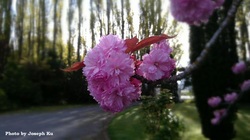Trusted Arborist Services in Wellington
If you live in the wider Wellington region, Paraparaumu, Kapiti, Waikanae, and Otaki—then our teams can help with everything from tree removal to stump grinding, hedge trimming to tree pruning.
Tree Planting Guide: Best Practices for Healthy Growth
Planting a tree is one of the best things you can do for your property and the environment.
The Role of Trees in Urban Environments
Urban trees play a crucial role in fostering healthier, more sustainable communities.
March & April Tree Care: Expert Advice for Healthy Trees
As summer waves goodbye and autumn rolls in, it's a great time to give your trees the TLC they need.
The Wonder of our Ancient Trees: Exploring Living History
New Zealand is home to some of the world’s most remarkable ancient trees.
Tips for Successfully Establishing Trees in Your Landscape
Planting trees is one of the best investments you can make for your property and the environment.
Tree Care Tips
We’ve compiled these articles so that you too, can benefit from the experience and knowledge that our arborists and skilled tree techs have. We are committed to our customers and desire that you enjoy and value your tree’s as much as we do.
Giving back to the community in various ways is yet another one of our key focuses.
 Spring is the perfect time to prune your ornamental trees, the sap has stopped rising, most trees are finishing flowering & leaves have developed. Trees are actively growing so any cuts are going to heal well. Trees are less prone to disease or infections due to the above reasons when pruned at this time of year. So for healthier trees & more sun during those evening BBQ’s & entertaining prune at the right time. If you need help or would prefer an expert arborist to do this for you please give us a CALL NOW on 344-6223 for your FREE Spring Tree Appraisal.
Spring is the perfect time to prune your ornamental trees, the sap has stopped rising, most trees are finishing flowering & leaves have developed. Trees are actively growing so any cuts are going to heal well. Trees are less prone to disease or infections due to the above reasons when pruned at this time of year. So for healthier trees & more sun during those evening BBQ’s & entertaining prune at the right time. If you need help or would prefer an expert arborist to do this for you please give us a CALL NOW on 344-6223 for your FREE Spring Tree Appraisal.